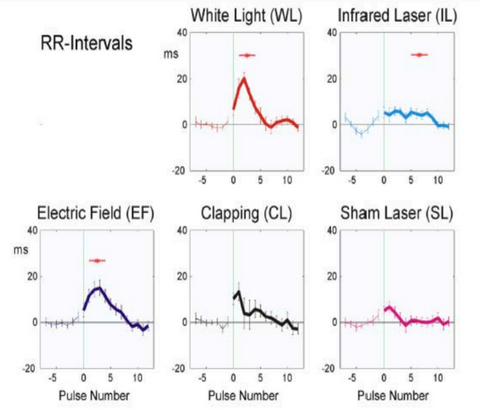Body of Research
Experimental Results in Auricular Medicine—A New Hypothesis. Citation: (Litscher 2018, 132)
This editorial proposes a multimodal concept for future research on the Vascular Autonomic Signal (VAS) through hypothesis concerning mechanisms of the VAS. Download the paper on Medicines (external link)
Litscher G, Yannacopoulos T, Kreisl P. Nogier Reflex: Physiological and Experimental Results in Auricular Medicine—A New Hypothesis. Medicines 2018;5(4):132.
Auricular Interventions in Neurology: the Vascular Autonomic Signal Challenge. Citation: (Quah-Smith, 2018)
Dr. Im Quah-Smith, MD, PhD, conjoint lecturer for Women’s and Children’s Health the University of New South Wales Medicine Program, points to evidence, clinical applications, and several use cases, to argue for broader use of Vascular Autonomic Signal (VAS) palpation in Auricular interventions (Auricular Medicine, ear acupuncture, transcutaneous Vagus Nerve Stimulation, and low-level laser therapy): “Today Auricular Medicine has strong biological and clinical evidence for its application with...
Investigation of a Micro-test for Circulatory Autonomic Nervous System Responses. Citation: (Moser 2017)
Most cells in the body react to signals of the autonomic nervous system. This explains the importance of this unconscious part of our nervous system for homeostatic regulation and hemodynamic balance. Searching for a suitable test for the organismic response to acupuncture, Nogier discovered a cardiovascular reaction, which could be triggered by slightly stimulating certain points mechanically on the human ear (Nogier, 1972). He called it “réflexe auriculo cardiaque” or RAC, known in English ...
A New Method in Auricular Medicine for the Investigation of the Nogier Reflex. Citation: (Litscher 2014, 205-210)
The palpation of the Vascular Autonomic Signal (VAS), also known as the Nogier reflex or Reflex Auriculo-Cardiac (RAC) is an important method used primarily in Auricular Medicine. This article presents a methodological approach for the detection and quantification of the VAS. View the paper.
Reference:Litscher G, Bahr F, Litscher D, Min LQ, Hong PJ. A New Method in Auricular Medicine for the Investigation of the Nogier Reflex. Integr Med Int. 2014;1:205–210
Monitoring the diagnosis of auricular points: contrasting the performance of the VAS and the electrical detector. Citation: (Rouxeville 2010)
Yves Rouxeville, lecturer in charge of the Auriculotherapy Curriculum for the Inter-University diploma (DIU) in acupuncture at the Université de Nantes, and colleagues, conducted a study in response to a request made by Professor Youenn Lajat that the Vascular Autonomic Signal (VAS, also known as Réflexe Auriculo-Cardiac or Nogier Pulse) be validated. At the time, Professor Lajat was the national president of the Coordination Committee for the DIU. With the question of potential for bias from...
Toward an Integral Energy Medicine Model for Understanding the Vascular Autonomic Signal. Citation: (Agnes 2002)
The Vascular Autonomic Signal (VAS) is a physiological response of the neurovascular system of the body to information being brought into its energy field. This response is palpated on the wall of the radial artery. The discovery of the VAS by Dr. Paul Nogier in 1966 brought an energetic diagnostic tool to the world. Muriel Agnes, founder of the Canadian Institute of Auricular Medicine (CIAM), studied the VAS to explore mechanisms for understanding the VAS.
The studies include a clinical demo...
The Biophysics of the Vascular Autonomic Signal and Healing. Citation: (Ackerman 2001)
In an article by Dr. John M. Ackerman, the subtle energy research initiated by the orthopedic surgeon, Joseph H. Navach, MD, is highlighted. Work, that has focused on a dermal-vascular reflex to an autonomic nervous system response known as the Vascular Autonomic Signal (VAS). VAS palpation has been used for fifty years by thousands of physicians around the world as part of auricular acupuncture and auriculomedicine applications in, or supplementing, their clinical practice. The purpose of th...
Concordance observed between detection achieved by VAS and electrical differentiation. Citation: (Rouxeville 2000)
Prof. Serguei Timochevski achieved blind testing respective to the VAS with the Acus system he developed in November 1996. He observed a concordance between detection achieved by the VAS and electrical differential detection plus “a general concordance of 90% between detection by the Acus system and electrical detection.”
Reference: Rouxeville, Y. Acupuncture auriculaire personnalisée. Sauramps Médical Montpellier; 2000:84-85,128-130.
